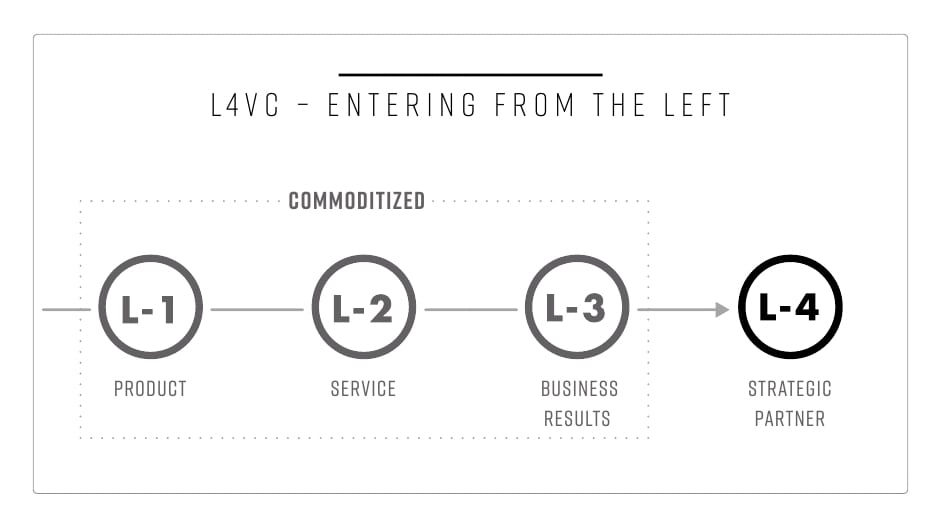Sales Book Review – Eat Their Lunch by Anthony Iannarino
Every now and then there comes a book with such far-reaching implications that literally everyone across the sales industry reads it and then begins fervently implementing the guidance in their personal and corporate strategy. Anthony Ianarino’s new book Eat Their Lunch is just such a book. The concepts, strategies and guidance in Eat Their Lunch are both brilliant and mandatory for success the current and future world of selling. This is the paradigm that all sales organizations should be adopting – period. Spoiler alert – I absolutely loved this book. It is cohesive, concise and paradigm-shifting. And I dare say that if you implement what is revealed here, you will be able to succeed in any situation, under any circumstances at any time. Let’s dig in.
Maybe Not What You Think
With a book title like Eat Their Lunch you might get the impression that it is about attacking your competition, but that couldn’t be further from the truth. Your intention is to better serve customers that are not getting what they really want or need. We win new customers by genuinely creating greater value than the competition. And, as we’ll see, there’s a lot more to that then just your product or solution. So it’s not about being combative – it’s about serving. Trusted advisers don’t tear down the competition. They say that they are good people capable of doing good work in certain scenarios but have dramatically different ideas of how to serve clients accordingly with different results. This then leads into conversation about how you are different and the impact that has for your clients.
What’s Inside
Eat Their Lunch is broken down into three parts:
- Part One – Developing Relationships & Gaining Access
- Part Two – Building Consensus: Wire the building
- Part Three – Winning with the Intangibles
Part one is about developing the new relationships you need to begin the process of displacing your competition. Part two is a framework that reveals how to go about creating opportunity (even where none may exist) and building the support necessary to win. In part three things get much more personal and you’ll discover how to position yourself as a trusted adviser and the right person for them to invest their time, energy and money in from here on out.
The Four Levels of Value Creation
The key to winning against the competition is creating more value. That is both easier and more difficult than you might expect. To illustrate this fact Anthony lays out his framework of the four levels of value creation. Within this framework we learn many important and sobering dynamics – including the fact that it’s far more important than just product and service alone or even delivering business results. These things are all important but all can lead to commoditization. Only at the forth level of value creation – that of a true strategic partner can you create value that is challenging for competitors to match.
There are insights in this section that are both stellar and sobering. If you’re relying on product, service or even outcome results to make your business case you are in for a wake-up call. These important foundational principles set the frame for the rest of the book.
Capturing Mindshare
Your role as a trusted adviser is to identify opportunities for improvement for your clients while also helping them avoid pitfalls and danger. Here Iannarino accentuates the importance of having command of the facts and situational knowledge needed to understand the opportunities and challenges in your client’s context. While not a messaging book per-se, there is some outstanding guidance here and elsewhere throughout the book on how to go about crafting your message. If you have never been involved in this process these tips and examples alone are worth the price of the book. I have been involved in many messaging projects and I can tell you with 100% confidence that what you are reading here – works.
Engaging Accounts
It matters very much how you enter into a conversation with clients. You want to enter as a trusted adviser, professional and peer. This means your message must be inherently valuable to them from the beginning. Self-centered messaging is not allowed. Excellent examples along with a few scrips are included on how to accomplish this. By establishing yourself as someone who knows what is changing, what the implications are for your prospect, and how they need to adapt to it, you are positioning yourself to create an opportunity – and a competitive displacement.
A New Type of Discovery
As we move into part three to we learn how important it is that both our discovery and selling efforts need to extend beyond just a few dissatisfied stakeholders and include relevant stakeholders from the entire organization. This necessitates a new form of discovery unlike any I have seen before. Here Anthony leverages the work of Ken Wilber to introduce a framework for discovery that is very innovative. I will not steal his thunder here but this model is a genuinely new and paradigm-shifting way of approaching discovery that will benefit all those who embrace it.
Building Consensus
In the section on building consensus Anthony takes on some sacred cows of selling including myths that all engagement should be from the top down, starting with executive management. I subscribe 100% to the insights being presented here. As someone who has engaged executive management for most of my career I can tell you that it is not always appropriate to begin every sale at the executive level. The appropriate place to engage is contextual – it depends on what your solution is and the stakeholders involved. Anthony uses Occam’s razor and says it this way: “The person you should be engaging not necessarily the CEO. The person you should be engaging is the CEO of the problem.” This is right on the money and can spare you and your organization much wasted energy focusing on entering at the wrong level for your type of solution. The person we are looking for is the one who cares most deeply about the problem and the results you produce. That is the fastest and most sure path.
There is much insight in this part of the book regarding exactly how to navigate complex sales. Both a process and framework are given and even those who sell solutions that are simpler and involve less stakeholders will benefit from the approach given. If you are involved in complex sales where there are many stakeholders the value here is off the charts. You’ll walk away with both a framework and a process that enables you to navigate the critical path to a deal that includes:
- Identifying who you need to engage
- What you need to do to gain their support
- What order you need to have your meetings
- And what the outcomes of those meetings needs to be
Back to Focusing on You
Part three of Eat Their Lunch places the focus back on you, the seller, and the less measurable part of selling that is so critical for success. You are, in fact, the most significant part of the value proposition. The data confirm this. I find this fact to be liberating because it is the great equalizer. It levels the playing field for all sales professionals. Product, service and brand are all second fiddle to you the professional. Here Anthony covers more the art of selling and how to create a preference based on your professionalism and approach, how to become a trusted adviser, and how to develop an executive presence. We reaffirm the importance of developing trust and having a strong informed point of view. Despite being about the artful aspect of selling there is much concrete advice and guidance here on how to act and communicate in a way that will ultimately end with you displacing your competition.
Protecting Clients
It’s impossible to read this work on how displace your competition without wondering, “What if someone used this on me?” So it is fitting that the final chapter is about how to protect your own clients from such displacement efforts. And fortunately, the strategy and skills you just learned are the very skills you need to retain your own clients. Retaining clients, like displacing competitors, is about adding value. And what follows is how to proactively and continuously add value for your clients. The lessons here apply to both companies as well as individual contributors and should be adopted by every person in every business of any kind. Application of these principles will not only eliminate attrition but it will also grow your business.
Conclusion
I’m not at all shy about how much I enjoyed Eat Their Lunch by Anthony Iannarino. It delivers genuinely new insights that are paradigm shifting and practical. There are exercises and helpful downloads at the end of every chapter. Eat Their Lunch is not just about learning, it’s about doing. And it’s focused in an area that is both badly needed and rarely covered – how to displace the competition. This is the material that all proactive salesforces will be implementing going forward. I recommend you join that group. Mastering the principles in Eat Their Lunch will give you the freedom to successfully pursue any client, at any time, regardless of the economic environment and I give it my highest recommendation.
You can find Eat Their Lunch on AMAZON.
Get notified when Tactical Sales Prospecting comes out by signing up for my newsletter at PureMuir.com .
Until next time!
James
Get the #1 book on closing sales now at Amazon.




